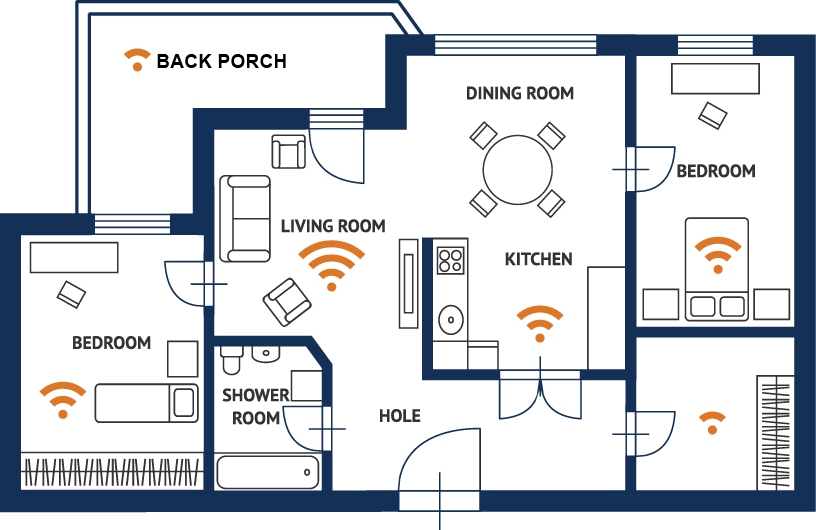Wi-Fi Explained
Wi-Fi Explained.
1. Your Wi-Fi network connects devices in your home or business to the internet and to each other using physical wires (fiber optic, CAT6, etc.)
2. The devices on the network connect wirelessly to a Wi-Fi router and together they form a wireless local area network (WLAN).
3. The Wi-Fi router is connected to the internet source via a broadband modem (with Lake Region, the modem and Wi-Fi router are one piece of equipment, ONU- Optical Network Unit.)
4. The internet is a wide area network (WAN) that connects computers from around the world.
5. When it comes to your Wi-Fi, you can control whether it is on or off, set password and the speed is determined by the router and speed you pay for.
6. Your Wi-Fi router and modem (ONU) have a symbiotic relationship. If you Wi-Fi router isn't working properly, then check the signal hard wired to the ONU box.
7. Be sure your Wi-Fi router can provide the bandwidth your home needs and number of devices you plan on connecting to the Wi-Fi. Some Wi-Fi routers do not support all the devices you may need to connect.
Wi-Fi FAQ
What’s the difference between a wired and wireless internet network?
Devices connected to a network can access the internet, work together, and share information. A wired network connects devices together using Ethernet cables. This places restrictions on where you can take your devices. Wired networks are often used when there are work stations and other internet-connected devices that do not move.
A wireless network connects devices without using physical wires. Instead, WiFi connects devices using radio waves. Many devices use wireless technology allowing you to move freely with your device and connect to the internet as long as there is an adequate signal.
Both wired and wireless networks allow you to control security restrictions and which devices can access others.
How can I get the most from my Lake Region WiFi networks: 2.4 GHz vs. 5 GHz?
When connecting to your WiFi through your Lake Region internet, you may see two different SSID connections, often labeled networks, one ending in 2.4 GHz and the second in 5 GHz. That’s because the router we provided you has two different bands of WiFi—5GHz is 802.11ac certified and 2.4GHz is 802.11n certified.
When available as an option on your device, it is recommended to connect to the 5 GHz SSID as it will provide a faster connection. The 2.4 GHz band can travel farther than the 5 GHz band, but it cannot offer the high-speed capabilities of 5 GHz.
In addition, the 2.4 GHz band may be crowded with baby monitors, microwave, and other household devices. It’s also important to remember that some devices can only pick up the 2.4 GHz band. This could be due to the age of the device, for example older smartphones, or simply the capabilities of the device.
To reach speeds in excess of 100 Mbps, your equipment will need to meet the newest WiFi standard, which is 802.11ac. Slower devices should be placed on the 2.4GHz band, and newer, faster devices should be placed on the 5GHz band.
Why is my device seeing lower than the the speed I am paying for when running a speed test (based on subscription)?
There are many factors that could contribute to the fact that your device may not be operating at the full speed you are subscribing to, speed even though we are delivering that speed to your doorstep.
You’ll get the fastest connection speed possible when you connect your device with an ethernet cable to your router. Wired connections operate with less environmental interference than wireless connections.
Wireless connections will never hit full speed.
- distance (the further you are from the router, the slower the speed)
- placement of the router (ideally the router should be centrally located and on the second floor of a multi-story home)
- construction of your home (the building materials your home is made of can have a negative effect on signal strength resulting in speed reduction—especially thick masonry and metal framing)
- interference from other wireless networks or devices (such as microwaves, cordless phones, baby monitors, Bluetooth devices, wireless mice, fluorescent lights, and wireless surveillance cameras)
- equipment (older devices operate on older wireless standards, which will produce slower speeds)
